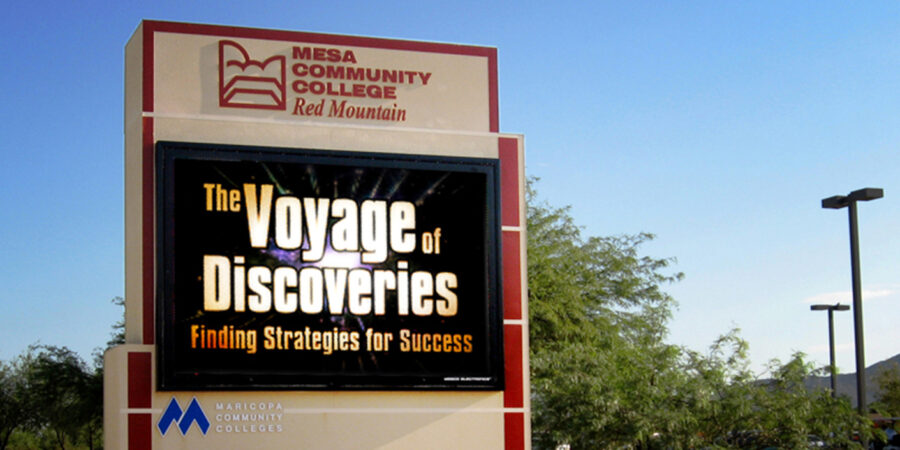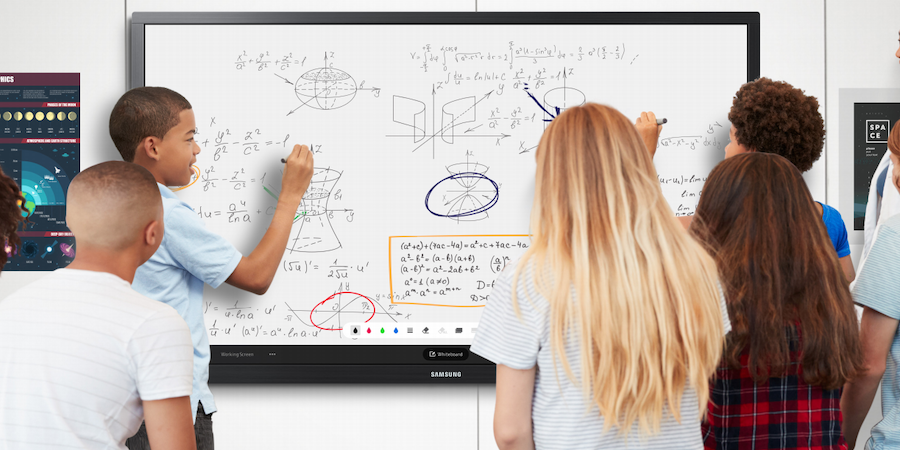Not long ago, outdoor LED signage on school campuses was a nice-to-have feature for announcing upcoming sports events or parent-teacher conferences. Now, outdoor digital signage is becoming a necessity — and more schools are choosing to invest.
The eye-catching aesthetics of digital signage are one factor, but for education decision makers, the most significant factor is emergency preparedness. COVID-19 has highlighted the importance of up-to-date, coordinated campus messaging. In any sort of emergency, including a fire, gas leak or lockdown, digital signage allows schools to update messaging quickly based on time-sensitive information, helping ensure the well-being of everyone on campus.
Campus communication at the center
Static signage that requires someone to make changes manually, letter by letter, is inefficient — and in an emergency, totally insufficient. To keep teachers, students and parents all fully informed, schools need dynamic signage that can be updated at a moment’s notice.
Make learning more fun with interactive technology
Learn why interactive learning matters & how prioritizing it engages students and improves outcomes. Download Now
Beyond safety needs, outdoor signage serves several more traditional functions, such as wayfinding that shows visitors where to park or which entrance to use.
With monument signage, schools can also announce school activities, events and information, improving the district’s overall communication strategy. For students and parents who are only on campus, such as in a hybrid learning model, up-to-date on-campus messaging is even more important.
Justifying the signage
The decision process to install an outdoor LED display — and the return on investment (ROI) calculation — will differ based on the kind of campus you have.
On high school campuses, for example, LED signage decisions are often driven by the athletic department’s desire to highlight successful sports programs. Outdoor displays are being used as video scoreboards, replacing outdated static scoreboards for football, soccer, baseball, lacrosse and other sports. This signage’s ROI is partly measured by the school’s ability to sell ad space to local businesses. These ad dollars can create additional revenue streams and help offset the purchase and operating costs of digital signage.
For middle and elementary schools, outdoor signage is used as a welcome message center at the front of the building or in the parking lot. The content on this signage tends to focus on the goings-on of campus. The PTA will typically be involved to help fund the signage.
In higher education, athletics programs are also driving installs, but the ROI calculation may differ based on alumni endowments.
While all these elements remain key components of signage ROI, health and safety concerns are currently at the forefront.
“It is partly the fear of not being prepared and properly communicating with students and faculty that can drive install or upgrade decisions,” explains Kelley Ruffoni, Director of Channel Sales at Samsung Electronics America. “It is an intangible but very important ROI calculation. This is happening at all levels of education.”
Completing the signage project
As you consider investing in LED signage for your school, you can start your search for funds with the COVID-19 relief portion of the American Rescue Plan Act of 2021. The Elementary and Secondary School Emergency Relief (ESSR) fund includes three phases of funds designated for health and safety measures, including signage and messaging about COVID-19 protocols.
In addition to funding, your outdoor LED project will also require permitting. This step should come early in your deployment process, as you may need to deliver presentations to the board of education, as well as your local zoning department or permitting boards, on the use and scope of your proposed signage.
To scope out, specify and even manage the installation aspects of your signage project, your school may work with an architect, subject matter expert or facilities manager. Samsung can work with your advisors to craft a turnkey solution that fits your school’s budget and other needs.
Once the specs are set and approvals obtained, you can source the components and installation from Samsung-approved value-added resellers, or your school’s trusted advisor can source and manage the project themselves.
“The most important part of the bidding process is for us to listen to the school and understand their needs so we can create the ideal solution and make the process as easy as possible,” says Ruffoni. “From the school’s point of view, they should be looking at the quality of the LED product, the stability of the supplier, product warranty and service capabilities to start.”
Ruffoni also highlighted other factors that schools are taking into consideration, such as related products the signage provider can offer. In Samsung’s case, this may include interactive whiteboards, monitors and hallway signage, alongside Samsung’s proprietary content management system (CMS), MagicINFO.
Schools everywhere need to provide timely, relevant information to their community. Digital signage makes this communication easier — and more widely accessible — to everyone on and off campus.
For more on-campus signage inspiration, discover Samsung’s full lineup of education technology for the classroom and the campus. And for inside the classroom, learn how interactive digital signage can increase student collaboration — particularly in hybrid learning environments.








